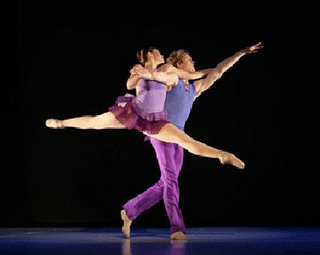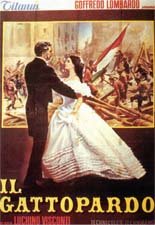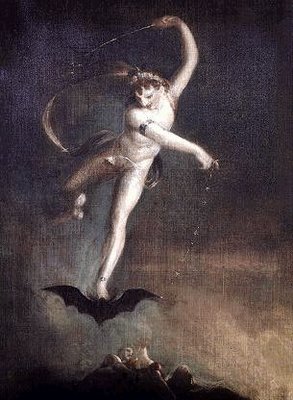Last month | Next monthClassical Month in Washington is a monthly feature that appears on the first of the month. If there are concerts you would like to see included on our schedule, send your suggestions by e-mail (ionarts at gmail dot com). Happy listening!September 2, 2006 (Sat)
1:30 pmRadio Broadcast:
La Clemenza di TitoWashington National Opera
NPR World of Opera (in Baltimore-Washington: 91.5, 90.9)
Review -- Jens F. Laurson (Ionarts, May 9, 2006)
September 3, 2006 (Sun)
8 pmNational Labor Day Concert [FREE]
National Symphony Orchestra
West Lawn, U.S. Capitol
September 6, 2006 (Wed)
8 pmJuan Gambina (tenor), and Michael Adcock (piano)
Embassy SeriesMeridian House International (1630 Crescent Place NW)
September 7 and 8, 2006 (Thu/Fri)
7 pmNational Symphony Orchestra (Roberto Minczuk, conductor/Joyce Yang, piano)
All-Tchaikovsky program
Kennedy Center Concert Hall
Review -- Jens F. Laurson (Ionarts, September 8)
September 8, 2006 (Fri)
7:30 pmTribute to French Opera
Opera Bel CantantiRandolph Road Theatre (Silver Spring, Md.)
Review -- Joan Reinthaler (
Washington Post, September 11)
September 9, 2006 (Sat)
1:30 pmRadio Broadcast:
Trilogy: Fedora (Act II), Otello (Act IV), The Merry Widow (Act III)Washington National Opera
NPR World of Opera (in Baltimore-Washington: 91.5, 90.9)
Review -- Charles T. Downey (Ionarts, October 1, 2005)
September 9, 2006 (Sat)
6 pmThe Amadeus Orchestra [FREE]
Kennedy Center Millennium Stage
September 9, 2006 (Sat)
7:30 pmSoyeon Lee, pianoKorean Concert Society
Kennedy Center Terrace Theater
Review -- Joe Banno (
Washington Post, September 11)
September 10, 2006 (Sun)
11 am to 4 pmAnnual Open House [FREE], with music and children's activities
Kreeger Museum
September 10, 2006 (Sun)
2 pmLawrence Brownlee, tenor (with Martin Katz, piano)
2006 Marian Anderson Award winner
Kennedy Center Terrace Theater
Review -- Jens F. Laurson (Ionarts, September 13)
September 10, 2006 (Sun)
3 pmTribute to French Opera
Opera Bel CantantiRandolph Road Theatre (Silver Spring, Md.)
Review -- Joan Reinthaler (
Washington Post, September 11)
September 10, 2006 (Sun)
3 pmWalsum Award Concert [FREE]
Left Bank String Quartet
Clarice Smith Performing Arts Center (College Park, Md.)
Review -- Andrew Lindemann Malone (
Washington Post, September 12)
September 11, 2006 (Mon)
6 pmStephen Kalnoske, organist [FREE]
Kennedy Center Concert Hall
September 12, 2006 (Tue)
7:30 pmWashington Musica VivaBrahms, Schubert, and world premiere of Charley Gerard's
44 Faces of FunkDennis and Phillip Ratner Museum (Bethesda, Md.)
Review -- Mark J. Estren (
Washington Post, September 14)
September 14, 2006 (Thu)
8 pmD.C. Tango Festival: Las Cuerdas de PiazzollaPan American Symphony Orchestra with Amy Beth Horman, violin
Jack Morton Auditorium, George Washington University
September 15, 2006 (Fri)
7:30 pmTribute to French Opera
Opera Bel CantantiLa Maison Française
Review -- Charles T. Downey (Ionarts, September 16)
September 16, 2006 (Sat)
1:30 pmRadio Broadcast:
L'Elisir d'AmoreWashington National Opera
NPR World of Opera (in Baltimore-Washington: 91.5, 90.9)
Review -- Jens F. Laurson (Ionarts, April 3, 2006)
September 16, 2006 (Sat)
7 pmDuke Bluebeard's Castle and Gianni SchicchiWashington National Opera
Review -- Jens F. Laurson (Ionarts, September 23)
September 16, 2006 (Sat)
8 pmNational Philharmonic (Brian Ganz, piano)
Music Center at Strathmore
September 16, 2006 (Sat)
8 pmD.C. Tango Festival: La Cumbre del TangoPan American Symphony Orchestra with Raul Juarena, bandoneon
Lisner Auditorium
September 17, 2006 (Sun)
3 pmEclipse Chamber Orchestra (Joseph Silverstein, guest conductor and violinist)
Music by Schubert, Stravinsky, Mozart, Haydn)
George Washington Masonic National Memorial (Alexandria, Va.)
Review -- Daniel Ginsberg (
Washington Post, September 19)
September 17, 2006 (Sun)
3 pmSuspicious Cheese Lords, 10th Anniversary Concert
Our Lady of Mercy Catholic Church (Potomac, Md.)
September 17, 2006 (Sun)
4:30 pmContemporary Music ForumPaul Moravec, Tempest Fantasy (Washington premiere); works by Saariaho, Nakatoni, Mobberley, and Lansky
Corcoran Gallery of Art
Review -- Jens F. Laurson (Ionarts, September 19)
September 17, 2006 (Sun)
5:30 pmStefan Jackiw (violin) and Max Levinson (piano)Shriver Hall (Baltimore, Md.)
Preview -- Tim Smith (
Baltimore Sun, September 14)
September 17, 2006 (Sun)
7:30 pmTribute to French Opera
Opera Bel CantantiOlsen Theater, Flint Hill School (Oakton, Va.)
September 19, 2006 (Tue)
8 pmIsabel Ettenauer, toy pianos, piano, and voice
Works by Essl, Cage, Hannan, and others
Austrian EmbassyReview -- Cecelia Porter (
Washington Post, September 21)
September 20, 2006 (Wed)
7:30 pmDuke Bluebeard's Castle and Gianni SchicchiWashington National Opera
September 20, 2006 (Wed)
8 pmNational Symphony Orchestra (Gil Shaham, violin)
Kennedy Center Concert Hall
Review -- Jens F. Laurson (Ionarts, September 22)
September 21, 2006 (Thu)
6 pm and 8 pmBaltimore ConsortPeabody Institute, Griswold Hall (Baltimore, Md.)
September 21, 2006 (Thu)
7 pmNicholas Maw, Sophie's ChoiceWashington National Opera
Review -- Jens F. Laurson (Ionarts, September 26)
September 21, 2006 (Thu)
7 pmNational Symphony Orchestra (Gil Shaham, violin)
Kennedy Center Concert Hall
Review -- Jens F. Laurson (Ionarts, September 22)
September 21, 2006 (Thu)
7 pmNatasa Mitrovic (piano) and Ellie Valkenburg (soprano)
Lecture performance, contemporary Serbian and American composers
International Finance Corporation Cultural CenterSeptember 21, 2006 (Thu)
7 pmCentral Javanese Gamelan Ensemble of the Embassy of Indonesia (led by Pak Muryanto) [FREE, reservation suggested]
Arlington Arts Center September 21, 2006 (Thu)
7:30 pmGary Schocker (flute) with Cliff Jackson (piano)
Mansion at Strathmore
September 22, 2006 (Fri)
1:30 pmNational Symphony Orchestra (Gil Shaham, violin)
Kennedy Center Concert Hall
September 22, 2006 (Fri)
5 pmNational Gallery Chamber Players Wind Ensemble [FREE]
National Gallery of Art, Sculpture Garden
September 23, 2006 (Sat)
10 am to 4 pm35th Anniversary International Children's FestivalArts Council of Fairfax County
The Barns at Wolf Trap
September 23, 2006 (Sat)
1:30 pmRadio Broadcast:
I Vespri SicilianiWashington National Opera
NPR World of Opera (in Baltimore-Washington: 91.5, 90.9)
Review -- Jens F. Laurson (Ionarts, September 29, 2005)
September 23, 2006 (Sat)
8 pmNina Assimakopoulos, flute, and Andrew Simpson, piano
New music by Andrew Simpson and other composers
Patricia M. Sitar Center for the Performing Arts (1700 Kalorama Road NW, Suite 101)
September 24, 2006 (Sun)
10 am to 4 pm35th Anniversary International Children's FestivalArts Council of Fairfax County
The Barns at Wolf Trap
September 24, 2006 (Sun)
2 pmNicholas Maw, Sophie's ChoiceWashington National Opera
September 24, 2006 (Sun)
3 pmPiano Society of Greater Washington, Fall Recital [FREE, with reception]
Calvary Lutheran Church (9545 Georgia Avenue, Silver Spring, Md.)
September 24, 2006 (Sun)
5 pmChamber Concert, members of Capitol City SymphonyAtlas Peforming Arts CenterSeptember 24, 2006 (Sun)
7 pmNational Symphony Orchestra: Season Opening Ball ConcertJoshua Bell (violin), Irina Mataeva (soprano), Daniil Shtoda (tenor)
All-Tchaikovsky program
Kennedy Center Concert Hall
Review -- Amy Argetsinger and Roxanne Roberts (
Washington Post, September 26)
September 25, 2006 (Mon)
7 pmDuke Bluebeard's Castle and Gianni SchicchiWashington National Opera
September 25, 2006 (Mon)
7 pmLes Grands Pianistes: François-Frédéric GuyCorcoran Gallery of Art
Review -- Jens F. Laurson (Ionarts, September 27)
September 27, 2006 (Wed)
7:30 pmNicholas Maw, Sophie's ChoiceWashington National Opera
September 27, 2006 (Wed)
7 pmLes Grands Pianistes: François-Frédéric GuyLa Maison Française
September 27, 2006 (Wed)
8 pmMonument Piano Trio, with soprano Janice Chandler-Eteme
All-Shostakovich program
Peabody Institute, Friedberg Hall (Baltimore, Md.)
Review -- Tim Smith (
Baltimore Sun, September 30)
September 27, 2006 (Wed)
8 pmCartoon, new music and video inspired by animated short films
Fireworks New Music EnsemblePatricia M. Sitar Center for the Performing Arts (1700 Kalorama Road NW, Suite 101)
September 28, 2006 (Thu)
7 pmNational Symphony OrchestraIlan Volkov, conductor/Yefim Bronfman, piano
Kennedy Center Concert Hall
Review -- Daniel Ginsberg (
Washington Post, September 29)
September 28, 2006 (Thu)
7:30 pmDuke Bluebeard's Castle and Gianni SchicchiWashington National Opera
September 28, 2006 (Thu)
8 pmBaltimore Symphony OrchestraYuri Temirkanov (conductor), Nancy Maultsby (mezzo-soprano)
Mahler's
Kindertotenlieder, Shostakovich's Fifth Symphony
Music Center at Strathmore
Review -- Jens F. Laurson (Ionarts, September 30
September 29, 2006 (Fri)
5 pmNational Gallery Chamber Players Brass Ensemble [FREE]
National Gallery of Art, Sculpture Garden
September 29, 2006 (Fri)
7 pmNational Symphony OrchestraIlan Volkov, conductor/Yefim Bronfman, piano
Kennedy Center Concert Hall
September 29, 2006 (Fri)
7 pmPuccini, Gianni Schicchi (for members of Generation O only)
Domingo-Cafritz Young Artist Program, Washington National Opera
Pre-performance lecture at 5:45 pm
Kennedy Center Opera House
Review -- Cecelia Porter (
Washington Post, October 2)
September 29, 2006 (Fri)
8 pmUniversity of Maryland Symphony Orchestra (Chris Gekker, trumpet; Rita Sloan, piano)
Shostakovich’s Piano Concerto No. 1 and Prokofiev’s Symphony No. 5
Clarice Smith Performing Arts Center
Review -- Gail Wein (
Washington Post, October 2)
September 29, 2006 (Fri)
8 pmBaltimore Symphony OrchestraYuri Temirkanov (conductor), Nancy Maultsby (mezzo-soprano)
Mahler's
Kindertotenlieder, Shostakovich's Fifth Symphony
Meyerhoff Symphony Hall (Baltimore, Md.)
September 29, 2006 (Fri)
8 pmRequiem & Resurrection: A Mozart Anniversary CelebrationWashington Bach Consort, with soprano Christine Brandes and other soloists
Music Center at Strathmore
Review -- Jens F. Laurson (Ionarts, October 1)
September 30, 2006 (Sat)
1:30 pmRadio Broadcast:
L'Italiana in AlgeriWashington National Opera
NPR World of Opera (in Baltimore-Washington: 91.5, 90.9)
Review -- Jens F. Laurson (Ionarts, May 16, 2006)
September 30, 2006 (Sat)
7 pmSeptember 30, 7 pm
Nicholas Maw, Sophie's ChoiceWashington National Opera
September 30, 2006 (Sat)
8 pmNational Symphony OrchestraIlan Volkov, conductor/Yefim Bronfman, piano
Kennedy Center Concert Hall
September 30, 2006 (Sat)
8 pmBaltimore Symphony OrchestraYuri Temirkanov (conductor), Nancy Maultsby (mezzo-soprano)
Mahler's
Kindertotenlieder, Shostakovich's Fifth Symphony
Meyerhoff Symphony Hall (Baltimore, Md.)
September 30, 2006 (Sat)
8 pmNational Philharmonic, with Piotr Paleczny (piano)
Music Center at Strathmore
Review -- Joe Banno (
Washington Post, October 2)
September 30, 2006 (Sun)
8 pmWords of Wisdom, Words of Woe (Beethoven's Ninth Symphony)
Opera Theater of Northern Virginia and Alexandria Symphony Orchestra
Rachel M. Schlesinger Concert Hall, Northern Virginia Community College
Review -- Joan Reinthaler (
Washington Post, October 2)
















![[Beethoven, 34x21] - by László Környei - www.painter.hu/kornyei](http://photos1.blogger.com/blogger/4844/292/400/Beethoven%20by%20L%3F%3FSZL%3F%3F%20K%3F%3FRNYEI.jpg)






